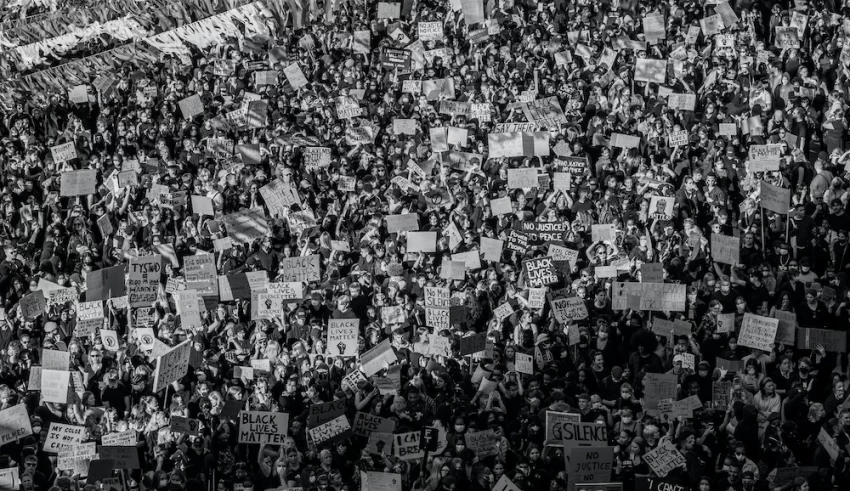
In recent years, Europe has witnessed a concerning trend that threatens the very essence of democratic societies—the gradual erosion of the right to protest. Historically hailed as a fundamental pillar of democratic governance, the right to protest has come under increasing pressure across the continent, raising serious questions about the state of civil liberties in Europe. One of the most alarming developments is the adoption of restrictive legislation ostensibly aimed at maintaining public order but with the potential to stifle dissent. Governments in various European countries have introduced laws that grant authorities broad powers to control and limit protests.
In France, a new law grants authorities the power to ban a planned demonstration deemed “likely to disturb public order”. In Germany, authorities can prohibit an assembly if it could endanger public safety or order. Similarly, in the UK the current government has engaged in many attempts to further curtail the right to protest. The new lower threshold of “more than minor” disruption for police intervention gives the authorities virtually unlimited power to interfere. Such systematic attacks on the right to protest are arguably possible due to the lack of a solid European legal framework. In fact, a specific right to protest does not exist in the ECHR, it is a combination of the right to expression (Article 10) and a right to assembly (Article 11).
The lack of a specific right to protest is further exacerbated by the non-absolute nature of the rights from which it derives. The ECHR leaves plenty of space for individual countries to interpret the exceptions to those rights. Furthermore, implementation relies on individual claims being brought before the ECtHR. There is no systematic oversight of compliance with the ECHR, thus for every violation that is addressed before the Court many other go undetected. In addition to the legislative and enforcement challenges, the rise of populist movements and divisive political rhetoric has contributed to an increasingly hostile environment for protesters and a widespread willingness by governments to justify actions by the police that clearly constitute an abuse of power.
There are plenty of examples of recent heavy-handed responses to protesters by law enforcement agencies. Instances of disproportionate use of force, arbitrary arrests, and intimidation tactics have become all too common. We have seen the police targeting peaceful protestors during climate-change protests, with specific popular activists being targeted, in almost a symbolic way that seems to send a message to everyone else. The arrest of Greta Thunberg in London is one of those cases. Similarly, the police in Italy have been seen to use disproportionate force against a clearly non-threatening crowd of young people in Turin, as they were expressing their dissent towards Meloni’s government. The disproportionate interfere of the authorities in Italy has gone as far as requesting people to take off dissenting signs they had hung outside their houses. States’ willingness to protect law enforcement agencies is made clear by their refusal to identify individual officers. In France, the Parliament passed a controversial legislation criminalising the “identification of an officer of the national police, a member of the national gendarmerie or an officer of the municipal police when they are taking part in a police operation”. Laws like this one inevitably further spread a climate of impunity.
What is more, the advent of digital surveillance technologies has added a new dimension to this threat. Governments across Europe are increasingly utilizing sophisticated surveillance tools to monitor and track activists and protesters. Technology, however, can arguably also counterbalance the chilling effect of the restrictive attitude towards the right to protest. Whilst before the advent of technology and social media people targeted for their dissent were more likely to disengage with politics, these days people who have not been allowed to protest on the street can use online platforms to continue to express their dissent.
The issue that we have seen is that this dynamic, stemming from states’ repressive attitude, contributes to the polarisation of public debate and the exacerbation of a “us against them” mentality. Therefore, ultimately government’s choice to silence dissent instead of engaging with it may very well backfire. It is indeed not a wise approach considering the long-term impracticality of it and how today’s world has changed in a way that people’s opinions cannot as easily be constrained. Ultimately, engaging in a dialogue with the opposition might keep governments in power longer than trying to shut them down a priori. Thus, an effort to protect the right to protest might ultimately benefit both society and those who thought that curtailing it might work to their advantage.
To address the erosion of the right to protest within the EU, it is imperative for the Union to lay down a more specific legal framework which limits the use of ambiguous language, thus reducing the space for misinterpretation and abuse. A greater concerted effort by European Institutions and international organisations should be channelled towards holding governments accountable both legally and publicly. Although states’ sovereignty demands a level of delegation of protection of civil rights, it is argued that they currently enjoy too wide a window to make arbitrary curtailments of a right that risks being emptied of any substance. Considering the central role of dissent in democratic systems, urgent action is needed to protect the right to protest.
By The European Institute for International Law and International Relations













